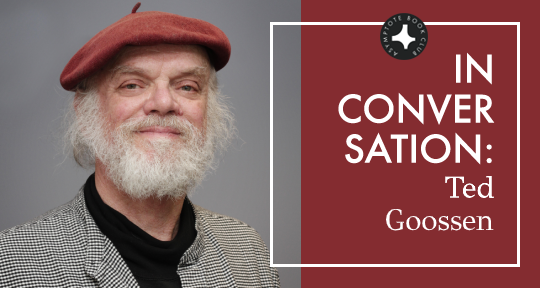Last month, we were delighted to bring you award-winning author Hiromi Kawakami’s latest in translation. Like much of her writing, our August Book Club selection tackles the everyday with a deliciously fantastic twist. In this interview with assistant managing editor Lindsay Semel, the inimitable Ted Goossen gives us a fascinating glimpse into the Japanese canon and the author’s place within it. He also shares his aversion to labels like “magical realism” or “women’s writing”: there are as many forms of the real and the female as there are cultures, he suggests, and that’s quite a gift.
The Asymptote Book Club aspires to bring the best in translated fiction every month to readers around the world. You can sign up to receive next month’s selection on our website for as little as USD15 per book; once you’re a member, you can join the online discussion on our Facebook page!
Lindsay Semel (LS): You’ve mentioned in interviews (mainly in connection to MONKEY, the magazine of Japanese literature you co-edit) that you strive to bring non-canonical Japanese writers to Anglophone readers. Do you think there’s a difference between the Japanese literary canon and the Western canon of Japanese literature in translation?
Ted Goossen (TG): That’s an excellent question, and of course there’s a difference. Regarding the Western reception of Japanese literature, one of the earliest works was The Tale of Genji: a 1,200-page, thousand-year-old novel written by a court lady, whose manuscript was initially hand-copied and circulated among her female peers. The first English translation, Arthur Waley’s, was published around 1920. At that time, Genji was highly exotic, even for the Japanese, because it was written in a way they couldn’t read. So Waley did us all a great service with his beautiful translation, and since then, there have been four or five more.
Other than that, Japanese literature didn’t really gain a Western audience until the 1960s; at that point, the US had made Japan—its enemy in World War II—an ally, and it had tried to resurrect its reputation. Because of the war, Americans thought of the Japanese as cruel and heartless, so the US needed to make them more “human,” render them more attractive. Not only was there an element of exoticism when it came to Japanese culture, then, but also a need to rehabilitate it. When Yasunari Kawabata won the Nobel Prize in 1968, Japanese literature was prized for the kind of poetic, Zen-like quality present in his writing. Kenzaburō Ōe, who won the Nobel in 1994, distanced himself from that whole stream, and his literature is unlike any that preceded it; it did garner a Western audience, albeit a relatively small one. Now, of course, it’s Murakami. He dominates the West to such an extent that when we speak of “non-canonical,” it’s almost like we’re saying “non-Murakami.”
You’ve mentioned MONKEY, and the paradox there is that Murakami is one of our biggest supporters; he and my co-editor Motoyuki Shibata are very close, I know him as well, and Jay Rubin, a frequent collaborator, is one of his best translators. So ironically, we’re using the magazine to highlight the work of writers who aren’t Murakami, but we use Murakami to draw attention to it by publishing lots of interesting interviews, essays, and dialogues about or with him. Still, certain authors like Mieko or Hiromi Kawakami are getting lots of buzz in their own right, simply because they’re so good. There are others, too, so we’re seeing the rise of quite a few Japanese writers in the English-speaking literary world. READ MORE…

